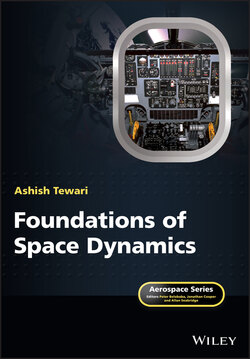Читать книгу Foundations of Space Dynamics - Ashish Tewari - Страница 13
1.1 Space Flight
ОглавлениеSpace flight refers to motion outside the confines of a planetary atmosphere. It is different from atmospheric flight in that no assistance can be derived from the atmospheric forces to support a vehicle, and no benefit of planetary oxygen can be utilized for propulsion. Apart from these major disadvantages, space flight has the advantage of experiencing no (or little) drag due to the resistance of the atmosphere; hence a spacecraft can achieve a much higher flight velocity than an aircraft. Since atmospheric lift is absent to sustain space flight, a spacecraft requires such high velocities to balance the force of gravity by a centrifugal force in order to remain in flight. The trajectories of spacecraft (called orbits) – being governed solely by gravity – are thus much better defined than those of aircraft. Since gravity is a conservative force, space flight involves a conservation of the sum of kinetic and potential energies, as well as that of the angular momentum about a fixed point. Therefore, space flight is much easier to analyze mathematically when compared to atmospheric flight.
